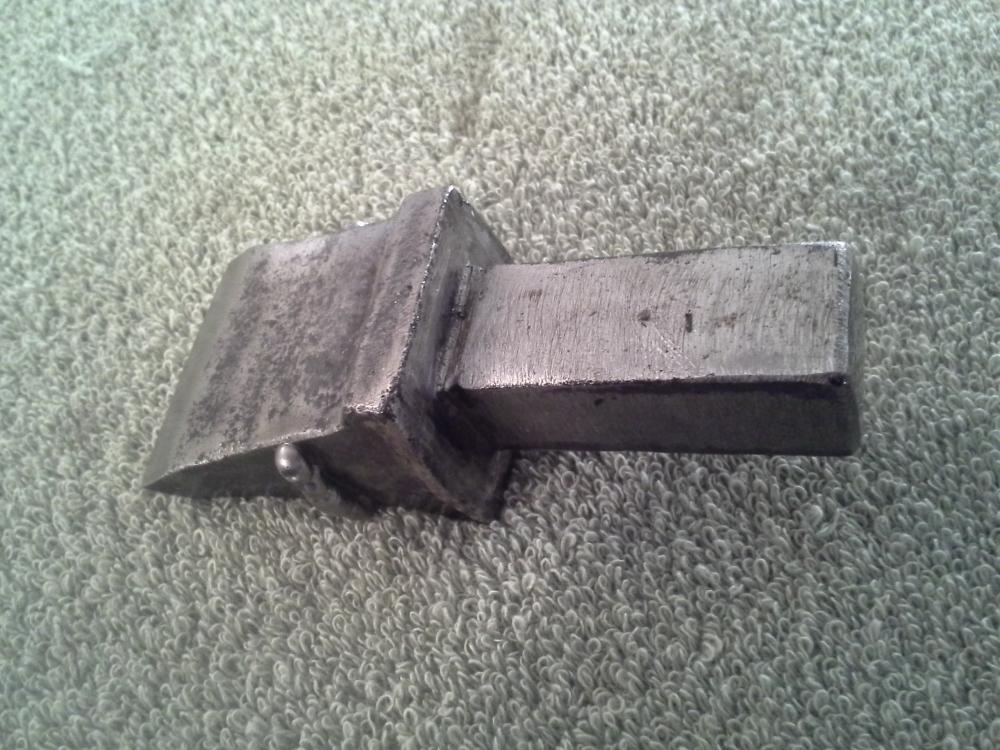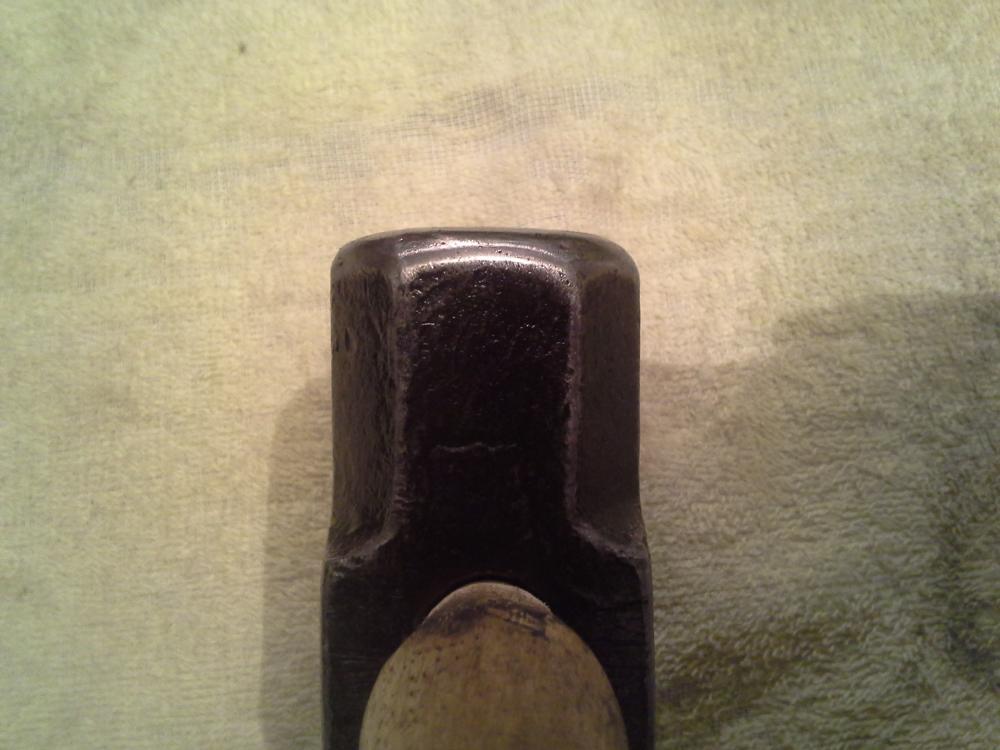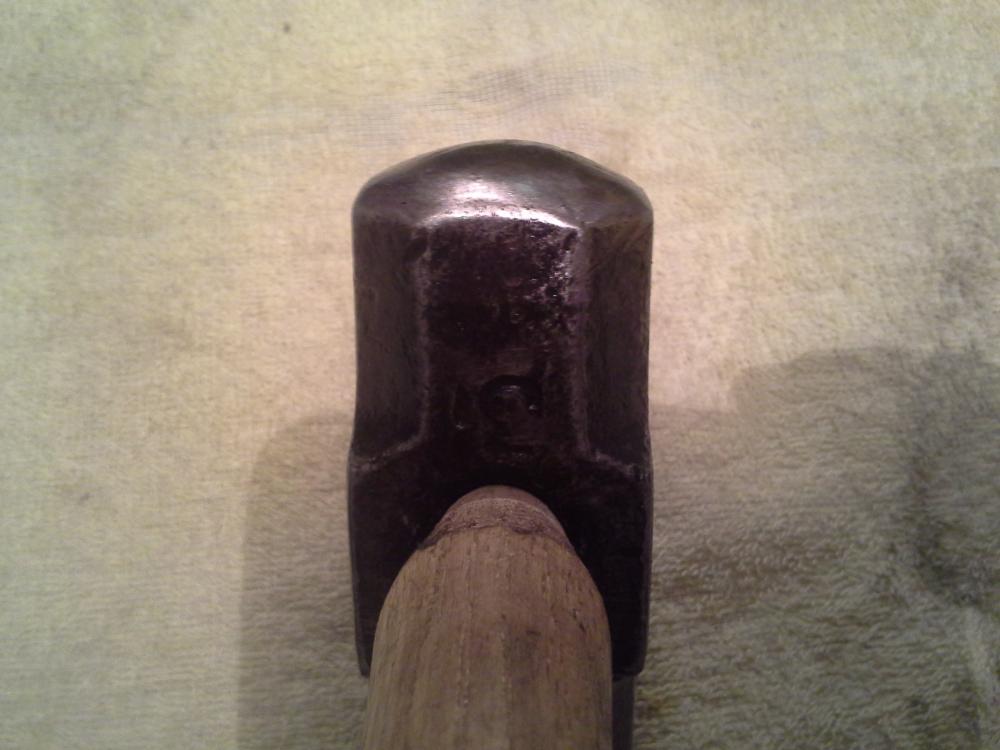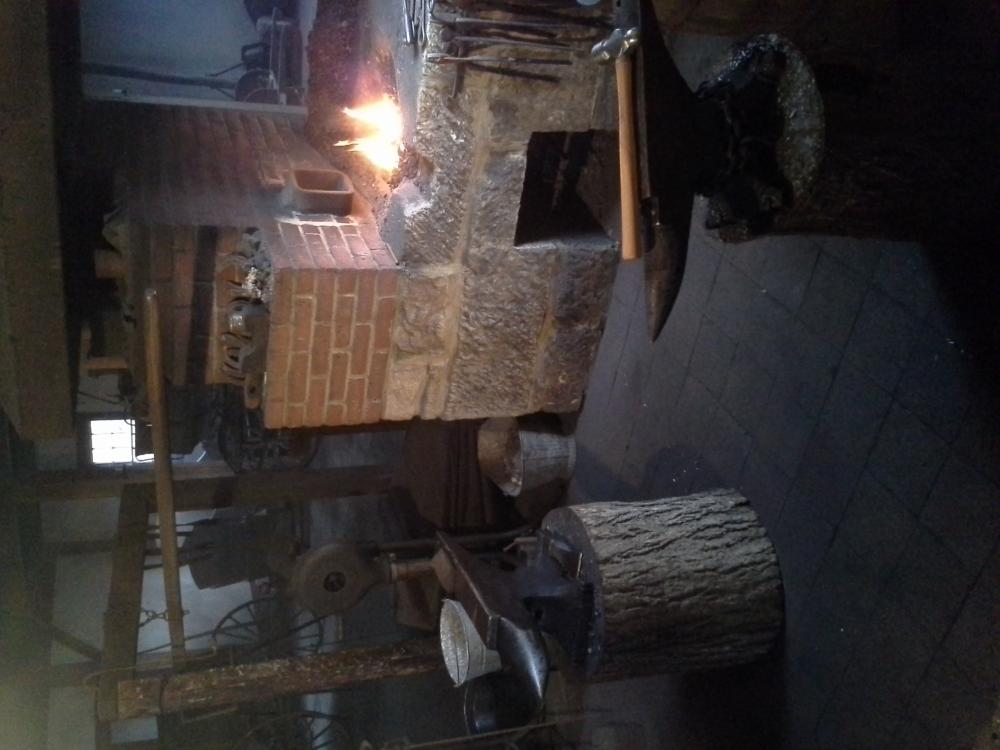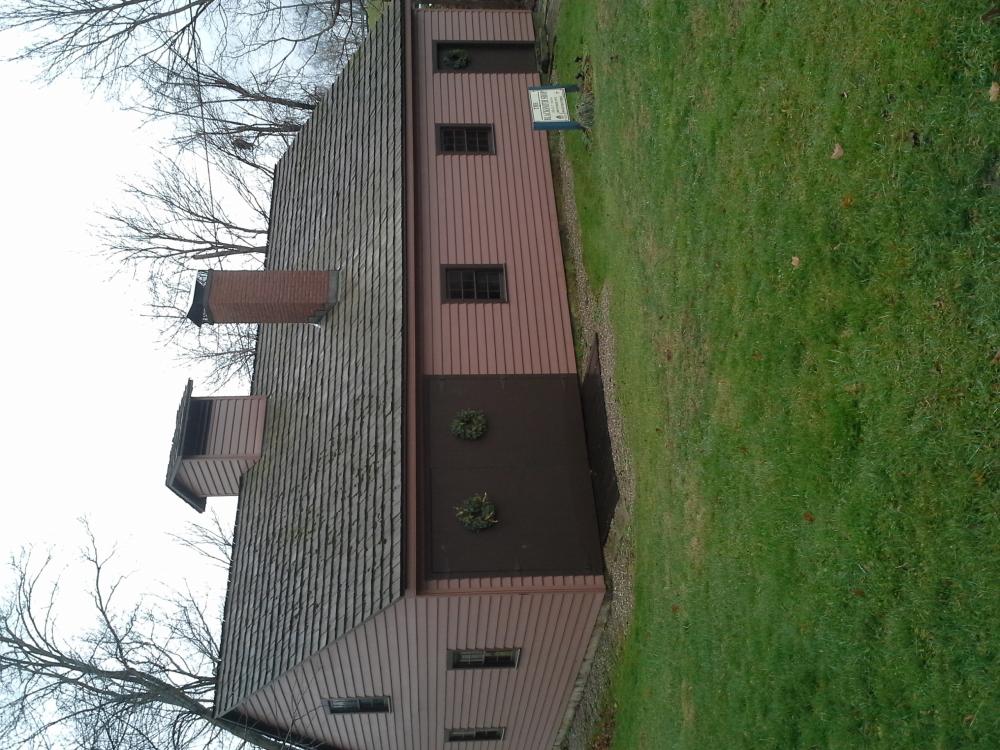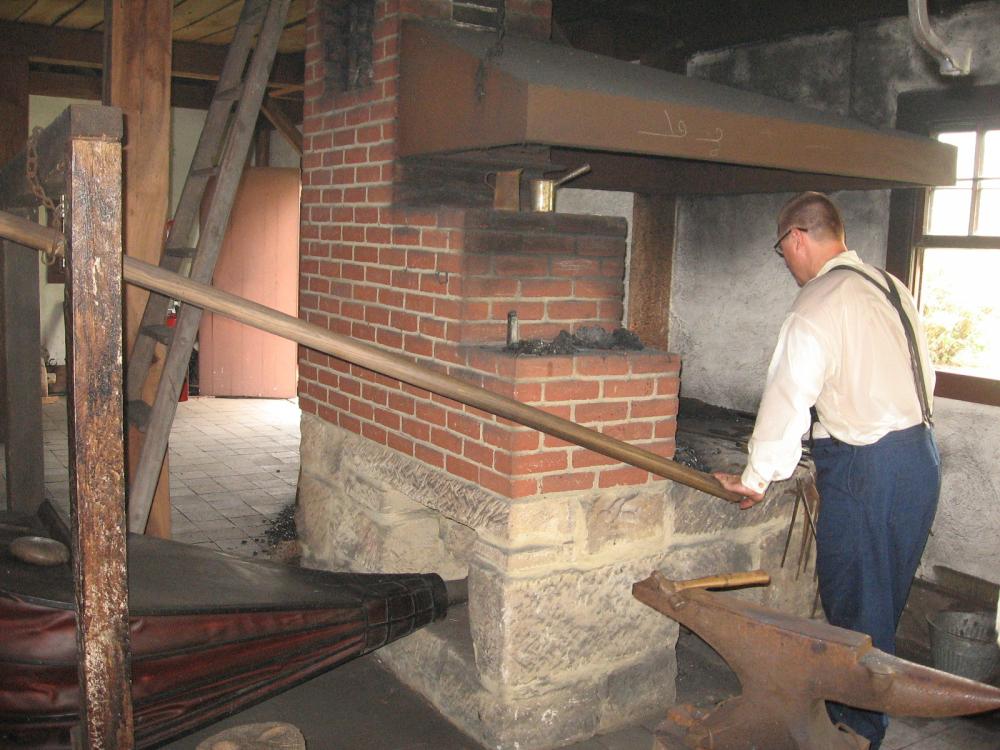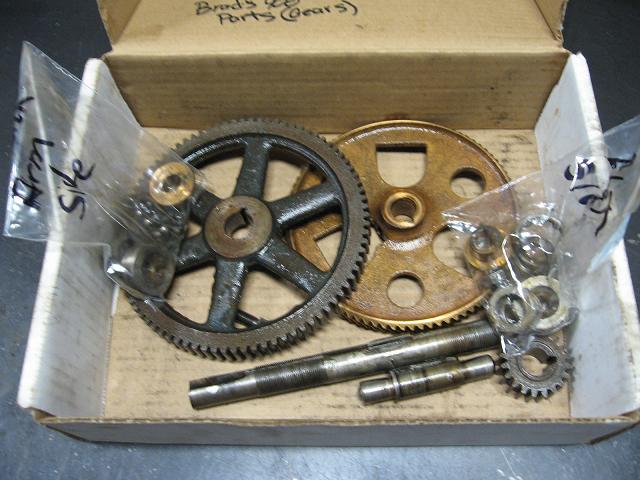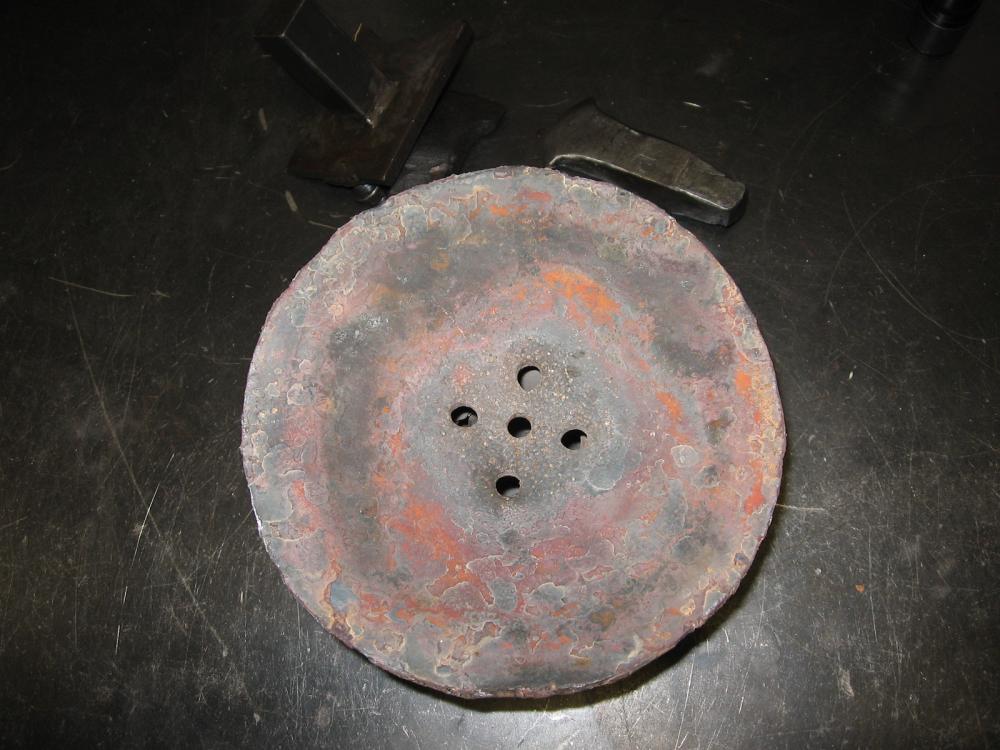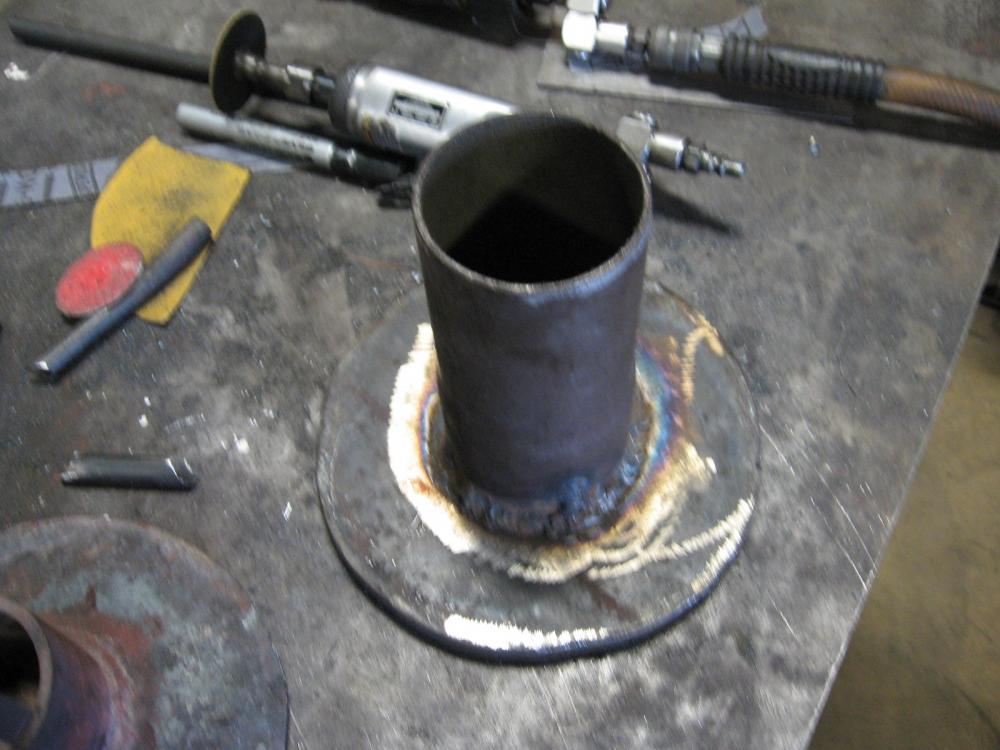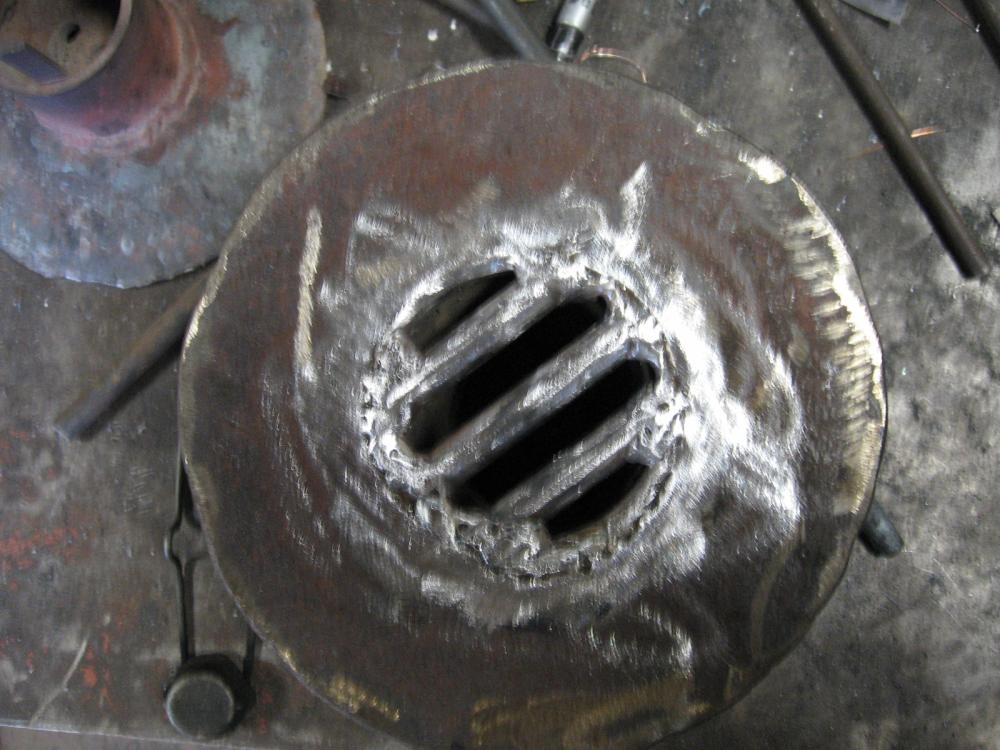-
Posts
1,227 -
Joined
-
Last visited
Content Type
Profiles
Forums
Articles
Gallery
Downloads
Events
Everything posted by SReynolds
-
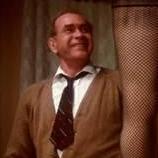
School me on Hardy hole size.
SReynolds replied to Thats Hot...'s topic in Anvils, Swage Blocks, and Mandrels
The hardie hole is likely going to be tapered. I would assume it must be as they punch it out hot. Yes, I have made a number of tools and employed the hollow tube hardie shank. But never for a hardie cut. The pipe is welded to the underside of an individual tool such as a fuller, swage, bolster plate etc. There are two options with the hardie cutter; you forge one with a tapered shank. When placed into the square hole it is stopped by the wedge of the taper. The other is to fuller the blank and draw out a shank. This creates a bolster/flange to allow the hardie cutter to rest upon the anvil's face. The flange seem to be the more traditional method of making a hardie cut. I have several of them and enjoy making them. But I prefer the one w/o the shank. Just a simple tapered shank that wedges into the hardie hole. Here is a pic of the bolster/flange style. -

Is a $140 hammer really that much better than a $40 hammer?
SReynolds replied to Pancho07's topic in Hand Hammers
Alrighty. Now I need a brass blower handle!! -

Is a $140 hammer really that much better than a $40 hammer?
SReynolds replied to Pancho07's topic in Hand Hammers
That is a cool idea. I have used the wrong intended end a few times. I won't use one for welding. -

Is a $140 hammer really that much better than a $40 hammer?
SReynolds replied to Pancho07's topic in Hand Hammers
When I had read about the benefits of rounding hammers I made my own from several inexpensive hammers I had. I will locate one and snap a picture of it. Same hammer. Opposite ends. I made three of these into rounding. Different weights. I love them for heavier steel/quicker draw-out. They sell these at the local farrier supply. One rounded. One flat aka very slightly convexed. But I just make em from my huge collection of hammers. -
Well. . . . . .LOL Yeah. I clean them off. For sure. I will give you the name brand of my solid steel anvils and you decide. It doesn't hurt them in my opinion. I would not want that on my big Trenton or Black Jack anvils. Cliff Carroll's Larkspur Colo.
-

School me on Hardy hole size.
SReynolds replied to Thats Hot...'s topic in Anvils, Swage Blocks, and Mandrels
I will offer this up for thought. You have the crowd that says the hardie tools are forged into the hardie hole. Perhaps a more traditional method? Ok fine. But when you say that is the correct method I wonder about you. The rest of the story is the fact the piece cools and don't fit. it becomes sloppy. think about it. I have tried it . Number of times.It is quite loose. So you the other two options. One is oversized stock. Grind to size. I use a pneumatic grinder. Electric high cycle works well. Then you have the one you forged to fit when hot or the one you purchased new or used. Weld the shank oversized and grind to fit. I have some with longer shanks to allow striking from underneath. Sone fit real tight. Cuz I want that. Others, that fit tight and too short can be struck from side to loosen such as a hardie cut. I like to forge to fit hot then I weld it up to fit cold by grinding. Still further, I have welded an insert into the original sized hole. spot weld from the bottom and you don't damage the face. And you wont need a special welding rod. I have been informed to my face that a mig or arc welder has no place in a blacksmith shop. You are no blacksmith if you weld anything with your electric welder. Folks say that to me today I will smack 'em. -

Is a $140 hammer really that much better than a $40 hammer?
SReynolds replied to Pancho07's topic in Hand Hammers
Yes. True that. Ok. For real. You have got to be kidding me. Most I find are 20.00 and lower. I dress them to ky standards. There is this guy on eBay peddling the 1905 champion forge blower catalog For$ 45.00 So you can buy same catalog on Centaur Forge site for $ 9.00 wonder if the eBay catalog is better? -
Test? I am relatively new to smithing but I will add this. Anvil ring? That is 1/4 of a complete test. My broken trenton rings like bell when not bolted tight. Myinexpensive solid steel anvils ring like that. Most do when not bolted tight. So I got this 1.5" ball bearing. I drop it onto my solid steel anvils (about three and half foot drop) it bounces decent but dents them. Do that on a Trenton and there is no dent and bounces about same I say or just a hair higher. Folks may get ticked you going about hitting or denting an anvil. I would ask prior.
-
Interesting. Isn't that the flat grey layered rock I pick outbof my green coal and the forge because it won't burn? Not alot of it but some in every bag the size of your thumb nail.
-
Sir. Yes sir. It is. Ohio Historical society. More or less. Not the village in Columbus. Rather the one near Canton. It is new(er) but the village is original from 1817. Some buildings are rebuilt. Gotta wonder who built this forge chimney. Real real bad. A professional no less. And the ji-normous hood ! Which serves no other perpous than to direct the ash onto your head. The other forge with champion 400 blower is on other side of the chimney. The stone forge employs a bellows. Interpretation is what I do. And teach classes . The funniest aspect is they rebuild the shop just like original per the photographs. But the forge and chimney? Even with pictures they decided to build it completely different. Smoke is a serious problem so I do my best to operate the internal fan and burn a hot fire with water on the green coal. The coke burns clean. Lots of open windows and the roof is also well vented via a very large coupla. Most folks don't complain. But there are always a few.
-
Likely so.
-
My McMaster Carr bearings just arrived. Only takes 24 hours. Not sure why more folks don't buy from them. Perhaps there are. But folks I ask wonder why you'd order from computer when all you gotta do is drive to town and pay retail. So I'm thinking the 1-1/2" 52100 Rockwell 60 was a mistake. Frosty was right. The 1/2" would be fine. Upon dropping the 1-1/2" bearing from shoulder height to Trenton on the floor the bearing shot up and through the garage roof. NowI gotta patch the roof.
-
Yes sir. I gFound It now.IN my steel chart.
-
The store is a farrier supply. Folks call folks who shoe horses a blacksmith. Go to the horse track. Locate the building on backstretch labeled Blacksmith. It ain't a guy making knives or candle cups. I don't agree but I cant change it. So anywhoo. The store is a farrier supply and they ain't sellin' S1 so it must not agree with them and locals must not like it. But, I respect your reply and hope in time I can try out all the popular tool steels for myself.
-
Yes. This unit does.It almost works too. This is the result of what can be accomplished with unlimited funds. Built for the state of Ohio Historical society where I work. The three 90° bends in the flue tile are the latest thing. It is an authentic 1850's era blacksmith shop. Including the electric fan well hidden inside the chimney.
-
Not today. Thanks. I ordered a package of 17/64 bearings and one 1.5" bearing. From McMaster Carr.
-
That one real popular blacksmith who teaches class and posts YouTube videos working 1"round stock like it is 3/8 ; Brian .....? Says to make hardies from mild steel. I was trying to get an idea why they have two tool steels. I buy pritchels and that's the way to go. I dont have to buy the tool steel of proper alloy and THEN work it into something. They don't even know why.
-
Got it. I was thinking 52100 was just that. So yeah. That makes sense. The issue with the forge blower isn't that. I know what I need. I was mearly giving an example of what I intend to use them for. The YouTube videos of dropping a ball bearing onto the face of an anvil can, apparently, be dangerous.
-
McMaster Carr sells ball bearings from many alloys and on of the options is E52100. Wikipedia doesn't shsowcase that. Only alloys steels in general. It is advertised as "very hard" Rockwell 60 What would E designate and the 52100? I want a large one for testing anvils. And a training aid in shop class to demonstrate rebound. I also need a package of ball bearings for my forge blower rebuilds.
-
The blacksmith supply sells tool steels. It's what folks buy to make tools I am told and nothing more. They really don't know. They just sell it. Is one better than the other for pritchels? H13 for hot work like creaser and pritchel right? and S 7 for a hardie ?
-
Yes. Wikipedia has a pic.
-
yes. Anything to allow air in and fire from dropping through. Although some drop-out would be permitted as you need to pass some of the clinker/ash,. thus the clean out. If nothing ever passed though, why do we all have the clean out cavity below the air inlet? iI too much passes though ,I weld in a couple of 3/8th inch nuts to fill the gap a bit....... between the gaps.
-
I didn't attend college to study forge design and function but I can tell you the old tuyere don't function well. The worst aspect of the old is the 2.5 inch pipe fits inside a 3 inch pipe. Thusly, as the four holes plug the air is now routed AROUND the firepot. My small rivet forges won't plug up like that as they have much larger holes. Enter my new designed tuyere for the large masonry forge. It will initially be experimental. if it works as well as I hope; it remains.
-
I located this gear box service tool, in my tool box. Ok, I made it. If a hammer works for you, then so be it, but won't try that. This guy fits snugly onto the cast hub of the fan. An impact wrench and possibly some heat as required. From 1 1/16" six point shallow socket.Fan is held in place via a locking nut and the fan HUB is threaded ONTO the worm gear shaft. parts
-
Real tired of punching out these holes in the large masonry forge. It will get plenty hot to weld when the holes are free, but they seldom are. Lots of punching. Time and again. The fellow prior to me build this for the historical society and I thought it was a mathematical science to design a tuyere. CFM and size of fire pot, the size of the bellows and the counter weight etc. etc.all had to coincide with one another. I have used this large forge for years and had enough. The bottom of the fire pot is 8.5 inches and is eight inches deep. About 18 inches across at the top. There are four 3/8 inch holes in original tuyere. 1/4" steel plate and very badly warped. Inlet to tuyere from bellows is 3 inch pipe. New fire pot base is 1/2 inch steel plate with 1/2 inch steel stock welded inside the 3 inch hole

